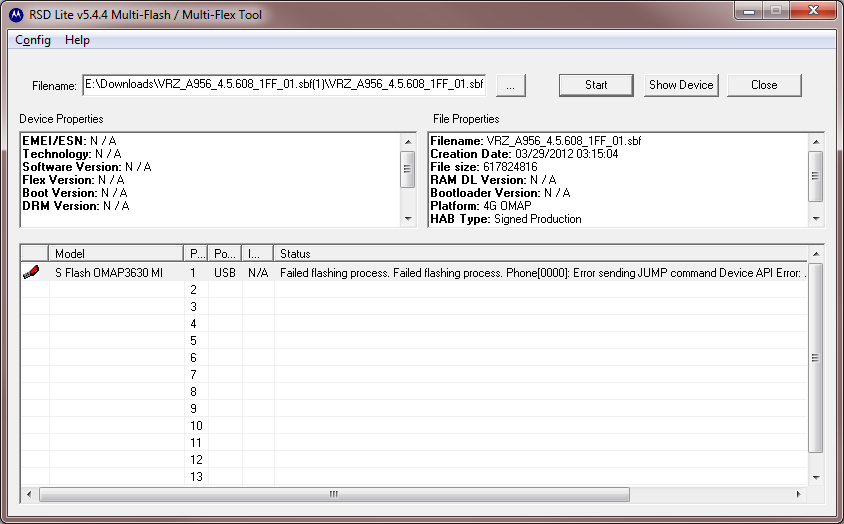Rootjunky.com On Twitter: Motorola Rsd Lite For Mac
RSD Lite Motorola Flash Tool. Download the here. Scroll down the page a little. Extract the zip to your desktop leaving you with a folder called RSD-Lite-Mac-Linux. Download the Motorola Firmware you need from HERE or HERE then extract all files in firmware.zip to RSD-Lite-Mac-Linux folder. open a Terminal and CD to folder RSD-Lite-Mac-Linux. Command to flash device is./rsd-flash.sh name of XML file you want to use EXAMPLES flash file.xml or service file.xml.
press enters to start the flash from terminal. watch for any errors. If no errors at the end of the script then press enter to reboot the device.
Rootjunky.com On Twitter: Motorola Rsd Lite For Macbook Pro
Might Also Like.

Rootjunky.com On Twitter: Motorola Rsd Lite For Mac Free
Response Headers The response header contains the date, size and type of file that the server is sending back to the client Pragma no-cache X-Port port10119 X-Cacheable YES:Forced Transfer-Encoding chunked Age 1 Vary Accept-Encoding, User-Agent X-Cache uncached X-Cache-Hit MISS X-Backend allrequests Cache-Control no-store, no-cache, must-revalidate, post-check=0, pre-check=0 Content-Type text/html; charset=UTF-8 Date Wed, 02 Nov 2016 16:58:33 GMT Expires Thu, 19 Nov 1981 08:52:00 GMT Set-Cookie PHPSESSID=9pfrf1e00n03qnov930vga49s2; path=/. Information of Dns Records Dns Records tells us about your web site's ip address, mx record and dns information. Host rootjunky.com class IN ttl 591 A Records are the most basic type of DNS record and are used to point a domain or subdomain to an IP address. Type A ip 184.168.47.225 host rootjunky.com class IN ttl 3600 NS records from rootjunky.com's nameservers type NS target ns38.domaincontrol.com host rootjunky.com class IN ttl 3600 type NS target ns37.domaincontrol.com host rootjunky.com class IN ttl 3600 SOA record is a Start of Authority.
Rootjunky.com On Twitter: Motorola Rsd Lite For Mac Download
All domain need a Start of Authority.
Tip: You can automatically as well. Sophie's clean up fails. This works similarly to how Disk Cleanup handles this but with the difference that system files such as previous Windows installations are included by default. A minor difference between both tools is that Free up disk space omits locations with 0 bytes. The list of locations and descriptions appear to be identical for all supported file locations. Some file locations are selected by default, others are not.